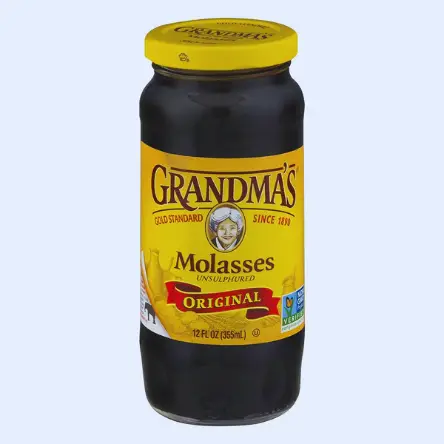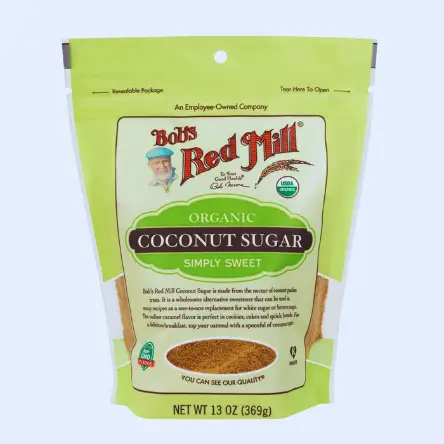Do you have a recipe that calls for raw honey but you don’t happen to have any on hand? Below we will dive into our favorite substitutes for raw honey.
The exact substitute will depend on the desired taste, texture, and purpose of the honey in a recipe. Some substitutes may have different sweetness levels, so adjustments to the recipe may be necessary.

Contents
1. Maple syrup
Maple syrup is a commonly used substitute for raw honey. It has a similar sweetness level and can provide similar viscosity and texture, making it a good choice for many recipes.
The main difference is that maple syrup has its own distinct flavor, so it may impart a slightly different taste to the final product.
This can sometimes be desirable, but in other cases, it may not be ideal. Ultimately, the best substitute for raw honey will depend on the specific recipe and the desired outcome.
2. Agave nectar
Agave nectar is often used as a substitute for raw honey because it has a similar sweetness level and a mild, neutral flavor that won’t overpower other ingredients. It also has a similar consistency to honey, making it a good choice for use in recipes where a thick, pourable sweetener is desired.
Agave nectar is made from the sap of the agave plant, which is native to Mexico and the Southwestern United States. It has a lower glycemic index than honey, meaning it doesn’t cause a rapid spike in blood sugar levels, and is often favored by those following a vegan or plant-based diet.
While agave nectar can be a good substitute for raw honey in many recipes, it’s important to note that it doesn’t have the same nutrients and enzymes as raw honey, so it may not provide the same health benefits. Additionally, some types of agave nectar are highly processed, which can reduce its health benefits. When using agave nectar as a substitute for raw honey, look for an organic, minimally processed product.
3. Molasses

Molasses can be a good substitute for raw honey because it has a similar consistency and provides a similar level of sweetness. It also has a distinct, robust flavor that can add depth and complexity to recipes, particularly baked goods.
Molasses is a byproduct of sugar production and is made by boiling sugar cane or sugar beet juice to extract the sugar. The remaining syrup is then processed further to create different types of molasses, with dark molasses having the strongest flavor and light molasses having the mildest.
Compared to raw honey, molasses is lower in sugar and higher in minerals such as iron, calcium, and magnesium. It also contains antioxidants and has been linked to potential health benefits, such as improving heart health and reducing inflammation.
When using molasses as a substitute for raw honey, keep in mind that it has a stronger flavor that may impact the taste of the final product. Additionally, because molasses is darker in color, it can also change the appearance of recipes, particularly light-colored baked goods.
4. Brown rice syrup
Brown rice syrup can be a suitable alternative to raw honey. With its similar thickness and sweetness, it can work well in recipes that require a pourable sweetener.
This sweetener is produced by breaking down the starches in brown rice through cooking with enzymes, followed by straining and boiling the resulting liquid to concentrate the sugars. It has a light, nutty taste and is often chosen by those seeking a gluten-free option or avoiding high fructose corn syrup.
However, it is important to note that compared to raw honey, brown rice syrup has a higher glycemic index, meaning it can cause a quick rise in blood sugar levels, and has a less concentrated source of nutrients and antioxidants. Additionally, its mild flavor may not provide the same depth of taste that raw honey can in specific recipes.
When using brown rice syrup as a substitute for raw honey, recipe adjustments may need to be made to compensate for its lower sweetness and milder taste.
5. Corn syrup
Corn syrup can be used as a substitute for raw honey, although it has a different flavor profile and consistency. Corn syrup is made by breaking down cornstarch into glucose and is commonly used as a sweetener and thickener in processed foods.
When using corn syrup as a substitute for raw honey, it’s important to keep in mind that it has a mild, neutral flavor, so it may not provide the same depth of flavor as raw honey in certain recipes. Additionally, corn syrup is much sweeter than raw honey, so you’ll need to use less of it to achieve the same level of sweetness.
To use corn syrup as a substitute for raw honey, measure it by volume, not by weight, and replace raw honey with an equal amount of corn syrup. You may also need to make other recipe adjustments to account for the difference in flavor and consistency. For example, you may need to add additional spices or reduce the amount of sugar in the recipe to balance the sweetness.
6. Date syrup
Date syrup is a thick, dark-colored syrup made from pureed dates. It has a rich, caramel-like flavor and a consistency similar to that of molasses.
Date syrup can be used as a substitute for raw honey, although it will impact the flavor of the final product. It is slightly sweeter than raw honey, but it also has a more pronounced flavor, so it may work well in recipes where you want to add a depth of flavor.
To use date syrup as a substitute for raw honey, measure it by volume and replace raw honey with an equal amount of date syrup. You may also need to make recipe adjustments to account for the difference in sweetness, such as reducing the amount of sugar in the recipe. Keep in mind that date syrup is darker in color than raw honey, so it can impact the appearance of light-colored baked goods.
7. Barley malt syrup
Barley malt syrup is a thick, dark, sweet syrup made from sprouted barley that has been cooked and evaporated. It has a strong, slightly bitter flavor with hints of malt and caramel, and is often used as a natural sweetener and alternative to processed sugar.
To use barley malt syrup as a substitute for raw honey, measure it by volume and replace raw honey with an equal amount of barley malt syrup. However, keep in mind that barley malt syrup is less sweet than raw honey and has a stronger, maltier flavor, so you may need to make recipe adjustments to compensate for these differences.
For example, you may want to reduce the amount of sugar in the recipe, or add additional spices or extracts to balance the maltiness of the barley malt syrup. Additionally, because it has a darker color, it can impact the appearance of lighter-colored baked goods.
8. Coconut sugar

Coconut sugar is a natural sweetener made from the sap of the coconut palm tree. It has a caramel-like flavor with hints of butterscotch, and is a popular alternative to processed sugar and artificial sweeteners.
To use coconut sugar as a substitute for raw honey, measure it by volume and replace raw honey with an equal amount of coconut sugar. However, keep in mind that coconut sugar has a lower sweetness level than raw honey, and a distinct flavor, so you may need to make recipe adjustments to compensate for these differences.
For example, you may want to increase the amount of coconut sugar in the recipe or add additional spices or extracts to enhance the flavor. Additionally, coconut sugar has a slightly darker color than raw honey, so it can impact the appearance of lighter-colored baked goods.
9. Stevia (in its liquid form)
Liquid stevia is a concentrated, zero-calorie sweetener made from the Stevia rebaudiana plant. It is much sweeter than sugar and honey, so you’ll need to use less of it to achieve the same level of sweetness.
To use liquid stevia as a substitute for raw honey, you’ll need to do some experimentation to find the right amount, as the potency of liquid stevia can vary greatly between brands. Start by using a small amount, such as a few drops, and adjusting to taste. Keep in mind that liquid stevia has a slightly bitter aftertaste, so you may want to add a small amount of another sweetener, such as coconut sugar or maple syrup, to balance it out.
When using liquid stevia as a substitute for raw honey, it’s also important to consider the role that honey plays in your recipe beyond its sweetness. Raw honey acts as a humectant, helping to retain moisture and add texture to baked goods, so you may need to add additional ingredients, such as an extra egg or a touch of oil, to compensate for its absence.
Finally, keep in mind that liquid stevia does not have the same consistency as raw honey, so it may not provide the same textural experience in recipes.
Substituting Raw Honey vs Honey
Honey and raw honey are similar, but raw honey is considered to be a more natural and minimally processed form of honey.
Regular honey is often heated and filtered to remove impurities and create a clear, smooth product. This process can also remove beneficial enzymes and reduce the amount of antioxidants present in the honey.
Raw honey, on the other hand, is usually minimally processed and is not heated above the temperature at which bees naturally produce it. This means that raw honey retains more of its natural enzymes and antioxidants, and may have a more distinct flavor profile, depending on the type of flowers the bees used to make the honey.
It’s important to note that the definition of “raw” honey can vary, and the processing methods used can affect the final product. To be sure you’re getting truly raw honey, it’s best to purchase from a trusted source and look for labeling that specifically states “raw.”